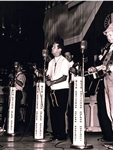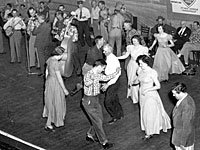Fort Donelson National Battlefield [TN]
Fort Donelson was a civil war fort located along the strategically important Ohio river. The Union victory at Fort Donelson in February 1862, was the first major Union victory of the war. After fighting off a small fleet of Union gunboats, the fort was surrounded by General Grant's army. The Confederate forces tried and failed to break the siege, and eventually surrendered unconditionally, giving the Union its first major victory and its first major war hero in General Grant. The park includes the fort and the surrounding Confederate fortifications.
The site offers historical information about the park as well as information to aid visitors, including a schedule of events, park map, list of nearby attractions, and logistical information such as park location and entrance fees. The park can be contacted by email via the "contact us" link on the website.

